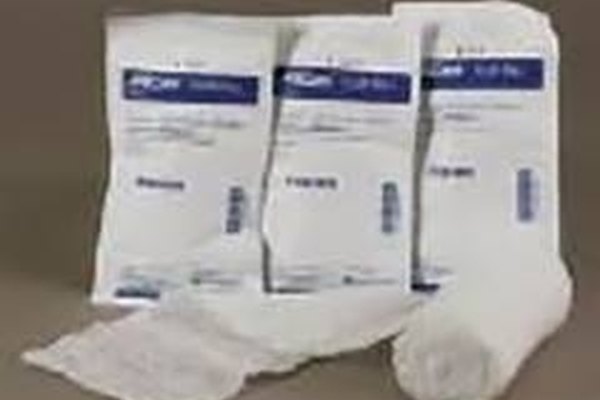Shingles is a painful rash that occurs when the varicella zoster (chicken pox) virus has been reactivated in the body. When a person has chicken pox, the virus will become dormant in cells and hide away for decades, only to be reawakened later. This reactivation can be caused by anything from stress to a weak immune system. The shingles rash can be contagious if contact with it is made by another person. There are a few measures you should take to protect others from the varicella zoster virus and to speed healing for yourself as well.
Clean the rash area by washing it. An antibacterial soap is ideal for this, but don't use too much and be sure to rinse it well, as any soap residue can cause further dryness and irritation of the rash area.
Place some antibiotic ointment on the center of a sterile gauze pad. The antibiotic ointment can help stop the infected blisters from spreading.
Place the sterile gauze pad over the rash and secure it in place. If you have a large area covered with the rash, you may need to use larger sterile gauze strips with medical tape to secure them in place. Covering the rash will protect it from clothing irritation, and will also protect others that come in contact with you from contracting the virus.
Wash your hands immediately after treating the shingles rash.
Take aspirin, acetaminophen or ibuprofen to help with the pain that is associated with the shingles virus.
Tip
The shingles rash is only contagious when it is in the blister stage. Once it has crusted over, you are no longer contagious, but you still should avoid contact with pregnant women, the elderly and those with weakened immune systems.
Tip
-
Do not scratch or rub the shingles rash as this will delay healing and promote spreading.
Writer Bio
A certified nutritionist who majored in health, fitness and nutrition, Traci Vandermark has been writing articles in her specialty fields since 1998. Her articles have appeared both online and in print for publications such as Simple Abundance, "Catskill Country Magazine," "Birds and Blooms," "Cappers" and "Country Discoveries."
Image Credit
www.flickr.com





